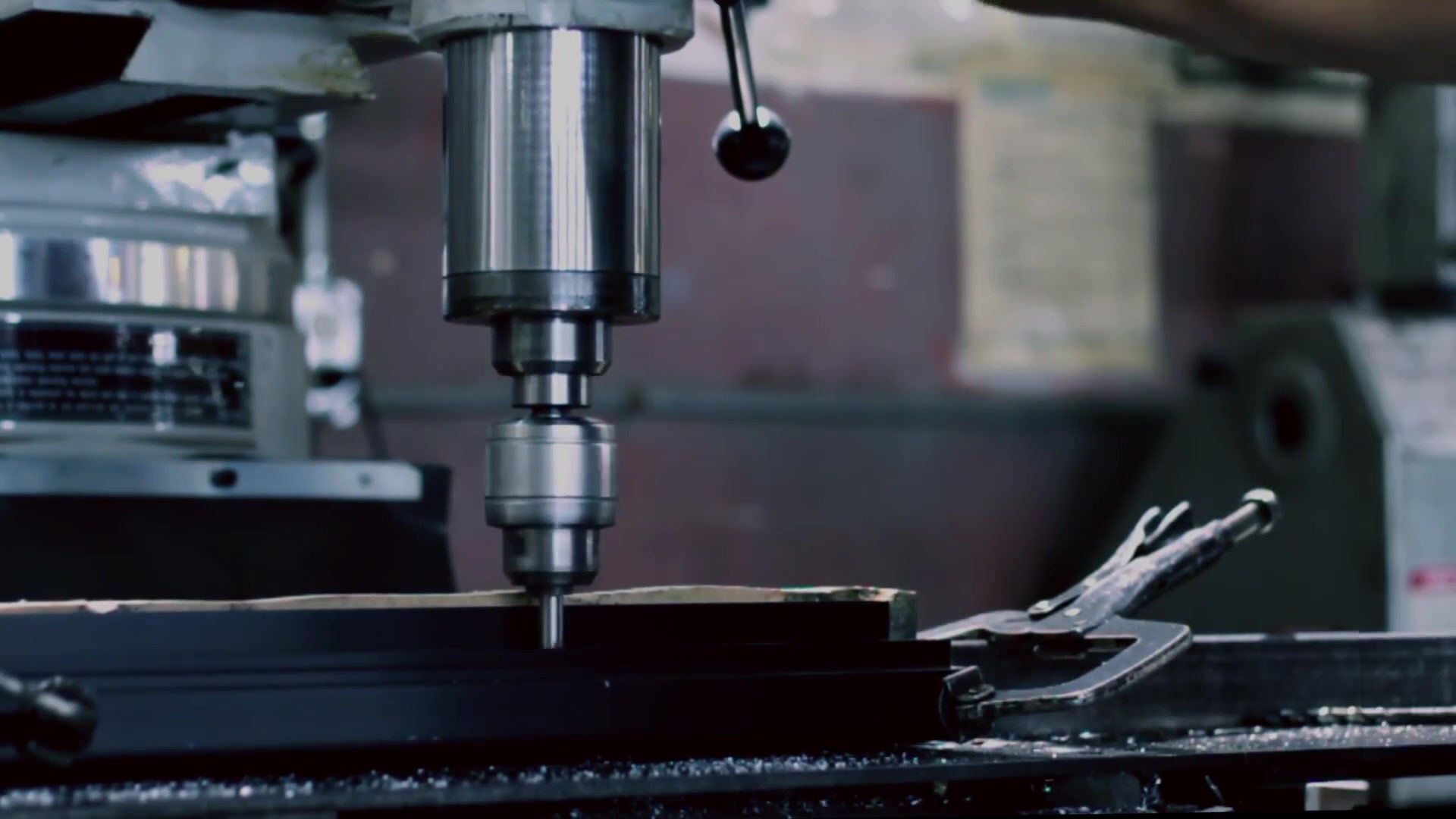


Global Custom Manufacturer, Integrator, Consolidator, Outsourcing Partner for a Wide Variety of Products & Services.
We are your one-stop source for manufacturing, fabrication, engineering, consolidation, integration, outsourcing of custom manufactured and off-shelf products & services. We also private label / white label your products with your brand name if you wish.
Choose your Language
-
Custom Manufacturing of Parts, Components, Assemblies, Finished Products, Machines and Industrial Equipment
-
Domestic & Global Contract Manufacturing
-
Manufacturing Outsourcing
-
Domestic, Global Procurement of Industrial Products
-
Private labeling / White Labeling your Products with your Brand Name
-
Product Finding & Locating Services
-
Global Design and Channel Partnership
-
Engineering Integration
-
Engineering Services
-
Global Consolidation, Warehousing, Logistics
AGS-TECH Inc. offers the following FIBER OPTIC TEST and METROLOGY INSTRUMENTS :
- OPTICAL FIBER SPLICER & FUSION SPLICER & FIBER CLEAVER
- OTDR & OPTICAL TIME DOMAIN REFLECTOMETER
- AUDIO FIBER CABLE DETECTOR
- AUDIO FIBER CABLE DETECTOR
- OPTICAL POWER METER
- LASER SOURCE
- VISUAL FAULT LOCATOR
- PON POWER METER
- FIBER IDENTIFIER
- OPTICAL LOSS TESTER
- OPTICAL TALK SET
- OPTICAL VARIABLE ATTENUATOR
- INSERTION / RETURN LOSS TESTER
- E1 BER TESTER
- FTTH TOOLS
You can download our product catalogs and brochures below to choose a suitable fiber optic test equipment for your needs or you may tell us what you need and we will match something suitable for you. We do have in stock brand new as well as refurbished or used but still very good fiber optic instruments. All our equipment is under warranty. Please download our related brochures and catalogs by clicking the colored text below:
ANRITSU Electronic Measuring Instruments
EXFO Optical Testing Solutions for Manufacturing and R&D
EXFO Data Center Solution Guide
EXFO Remote Fiber Testing and Monitoring
EXFO Test Solutions for Submarine Networks
EXFO Quick Guide to Testing FTTH
EXFO Fiber Deep and Remote PHY Test Solutions
EXFO OTDR and iOLM Selection Guide
EXFO Spectral Testing of Active Systems
EXFO Network Equipment Manufacturers End-to End Solutions
EXFO Expert-Level Field Test Solutions
EXFO Mobile Backhaul End to End Network Assessment
EXFO High-Speed Product Portfolio
TRIBRER Handheld Optical Fiber Instruments and Tools
You can purchase brand new, refurbished or used equipment from us at the most competitive discounted prices. Simply choose the product from the downloadable catalogs and let us know the product name, product code and relevant information and we will send you our best quote.
What distinguishes AGS-TECH Inc. from other suppliers is our wide spectrum of ENGINEERING INTEGRATION and CUSTOM MANUFACTURING capabilities. Therefore, please let us know if you need a custom jig, a custom automation system designed specifically for your fiber optic testing needs. We can modify existing equipment or integrate various components to build a turn-key solution to your engineering needs.
It will be our pleasure to briefly summarize and provide information about the main concepts in the realm of FIBER OPTIC TESTING.
FIBER STRIPPING & CLEAVING & SPLICING : There are two major types of splicing, FUSION SPLICING and MECHANICAL SPLICING. In industry and high volume manufacturing, fusion splicing is the most widely used technique as it provides for the lowest loss and least reflectance, as well as providing the strongest and most reliable fiber joints. Fusion splicing machines can splice a single fiber or a ribbon of multiple fibers at one time. Most single mode splices are fusion type. Mechanical splicing on the other hand is mostly used for temporary restoration and mostly for multimode splicing. Fusion splicing requires higher capital expenses as compared to mechanical splicing because it requires a fusion splicer. Consistent low loss splices can only be achieved using proper techniques and keeping equipment in good condition. Cleanliness is vital. FIBER STRIPPERS should be kept clean and in good condition and be replaced when nicked or worn. FIBER CLEAVERS are also vital for good splices as one has to have good cleaves on both fibers. Fusion splicers need proper maintenance and fusing parameters need to be set for the fibers being spliced.
OTDR & OPTICAL TIME DOMAIN REFLECTOMETER : This instrument is used to test the performance of new fiber optic links and detect problems with existing fiber links. OTDR traces are graphical signatures of a fiber's attenuation along its length. The optical time domain reflectometer (OTDR) injects an optical pulse into one end of the fiber and analyzes the returning backscattered and reflected signal. A technician at one end of the fiber span can measure and localize attenuation, event loss, reflectance, and optical return loss. Examining non-uniformities in the OTDR trace we can evaluate the performance of the link components such as cables, connectors and splices as well as the quality of the installation. Such fiber tests assure us that the workmanship and quality of the installation meet the design and warranty specifications. OTDR traces help characterize individual events that can often be invisible when conducting only loss/length testing. Only with a complete fiber certification, installers can fully understand the quality of a fiber installation. OTDRs are also used for testing and maintaining fiber plant performance. OTDR allows us to see more details impacted by the cabling installation. OTDR maps the cabling and can illustrate termination quality, location of faults. An OTDR provides advanced diagnostics to isolate a point of failure that may hinder network performance. OTDRs allow discovery of problems or potential problems along the length of a channel that may affect long term reliability. OTDRs characterize features such as attenuation uniformity and attenuation rate, segment length, location and insertion loss of connectors and splices, and other events such as sharp bends that may have been incurred during installation of cables. An OTDR detects, locates, and measures events on fiber links and requires access to only one end of the fiber. Here is a summary of what a typical OTDR can measure:
Attenuation (also known as fiber loss): Expressed in dB or dB/km, attenuation represents the loss or the rate of loss between two points along the fiber span.
Event Loss: The difference in the optical power level before and after an event, expressed in dB.
Reflectance: The ratio of reflected power to incident power of an event, expressed as a negative dB value.
Optical Return Loss (ORL): The ratio of the reflected power to the incident power from a fiber optic link or system, expressed as a positive dB value.
OPTICAL POWER METERS : These meters measure average optical power out of an optical fiber. Removable connector adapters are used in optical power meters so that various models of fiber optic connectors can be used. Semiconductor detectors inside power meters have sensitivities that vary with the wavelength of light. Therefore they are calibrated at typical fiber optic wavelengths such as 850, 1300 and 1550 nm. Plastic Optical Fiber or POF meters on the other hand are calibrated at 650 and 850 nm. Power meters are sometimes calibrated to read in dB (Decibel) referenced to one miliwatt of optical power. Some power meters however are calibrated in relative dB scale, which is well suited for loss measurements because the reference value may be set to “0 dB” on the output of the test source. Rare but occasionally lab meters measure in linear units such as miliwatts, nanowatts….etc. Power meters cover a very broad dynamic range 60 dB. However most optical power and loss measurements are made in the range 0 dBm to (-50 dBm). Special power meters with higher power ranges of up to +20 dBm are used for testing fiber amplifiers and analog CATV systems. Such higher power levels are needed to assure the proper functioning of such commercial systems. Some laboratory type meters on the other hand can measure at very low power levels down to (-70 dBm) or even lower, because in research and development engineers frequently have to deal with weak signals. Continuous wave (CW) test sources are used frequently for loss measurements. Power meters measure the time average of the optical power instead of the peak power. Fiber optic power meters should be recalibrated frequently by labs with NIST traceable calibration systems. Regardless of price, all power meters have similar inaccuracies typically in the neighborhood of +/-5%. This uncertainty is caused by the variability in coupling efficiency at the adapters/connectors, reflections at polished connector ferrules, unknown source wavelengths, nonlinearities in electronic signal conditioning circuitry of the meters and detector noise at low signal levels.
FIBER OPTIC TEST SOURCE / LASER SOURCE : An operator needs a test source as well as a FO power meter in order to make measurements of optical loss or attenuation in fibers, cables and connectors. The test source must be chosen for compatibility with the type of fiber in use and the wavelength desired for performing the test. Sources are either LED's or lasers similar to those used as transmitters in actual fiber optic systems. LED's are generally used for testing multimode fiber and lasers for singlemode fibers. For some tests such as measuring spectral attenuation of fiber, a variable wavelength source is used, which is usually a tungsten lamp with a monochromator to vary the output wavelength.
OPTICAL LOSS TEST SETS : Sometimes also refered to as ATTENUATION METERS, these are instruments made of fiber optic power meters and sources which are used to measure the loss of fibers, connectors and connectorized cables. Some optical loss test sets have individual source outputs and meters like a separate power meter and test source, and have two wavelengths from one source output (MM: 850/1300 or SM:1310/1550) Some of them offer bidirectional testing on a single fiber and some have two bidirectional ports. The combination instrument which contains both a meter and a source may be less convenient than an individual source and power meter. This is the case when the ends of the fiber and cable are usually separated by long distances, which would require two optical loss test sets instead of one source and one meter. Some instruments also have a single port for bidirectional measurements.
VISUAL FAULT LOCATOR : These are simple instruments that inject visible wavelength light into the system and one can visually trace the fiber from transmitter to receiver to insure correct orientation and continuity. Some visual fault locators have powerful visible light sources such as a HeNe laser or visible diode laser and therefore high loss points can be made visible. Most applications center around short cables such as used in telecommunication central offices to connect to the fiber optic trunk cables. Since the visual fault locator covers the range where OTDRs are not useful, it is complementary instrument to the OTDR in cable troubleshooting. Systems with powerful light sources will work on buffered fiber and jacketed single fiber cable if the jacket is not opaque to the visible light. The yellow jacket of singlemode fibers and orange jacket of multimode fibers will usually pass the visible light. With most multifiber cables this instrument cannot be used. Many cable breaks, macrobending losses caused by kinks in the fiber, bad splices….. can be detected visually with these instruments. These instruments have a short range, typically 3-5 km, due to high attenuation of visible wavelengths in fibers.
FIBER IDENTIFIER : Fiber Optic technicians need to identify a fiber in a splice closure or at a patch panel. If one carefully bends a singlemode fiber enough to cause loss, the light that couples out can also be detected by a large area detector. This technique is used in fiber identifiers to detect a signal in the fiber at transmission wavelengths. A fiber identifier generally functions as a receiver, is able to discriminate between no signal, a high speed signal and a 2 kHz tone. By specifically looking for a 2 kHz signal from a test source that is coupled into the fiber, the instrument can identify a specific fiber in a large multifiber cable. This is essential in fast and speedy splicing and restoration processes. Fiber identifiers can be used with buffered fibers and jacketed single fiber cables.
FIBER OPTIC TALKSET : Optical talk sets are useful for fiber installation and testing. They transmit voice over fiber optic cables that are installed and allow the technician splicing or testing the fiber to communicate effectively. Talksets are even more useful when walkie-talkies and telephones are not available in remote locations where splicing is being done and in buildings with thick walls where radio waves will not penetrate through. Talksets are most effectively used by setting up the talksets on one fiber and leaving them in operation while testing or splicing work is done. This way there will always be a communications link between the work crews and will facilitate deciding which fibers to work with next. The continuous communications capability will minimize misunderstandings, mistakes and will speed up the process. Talksets include those for networking multi-party communications, especially helpful in restorations, and system talksets for use as intercoms in installed systems. Combination testers and talksets are also available commercially. To this date, unfortunately different manufacturers' talksets can not communicate with each other.
VARIABLE OPTICAL ATTENUATOR : Variable Optical Attenuators allow the technician to manually vary the attenuation of the signal in the fiber as it is transmitted through the device. VOAs can be used to balance the signal strengths in fiber circuits or to balance an optical signal when evaluating the dynamic range of the measurement system. Optical attenuators are commonly used in fiber optic communications to test power level margins by temporarily adding a calibrated amount of signal loss, or installed permanently to properly match transmitter and receiver levels. There are fixed, step-wise variable, and continuously variable VOAs commercially available. Variable optical test attenuators generally use a variable neutral density filter. This offers the advantages of being stable, wavelength insensitive, mode insensitive, and a large dynamic range. A VOA may be either manually or motor controlled. Motor control provides users a distinct productivity advantage, since commonly used test sequences can be run automatically. The most accurate variable attenuators have thousands of calibration points, resulting in excellent overall accuracy.
INSERTION / RETURN LOSS TESTER : In fiber optics, Insertion Loss is the loss of signal power resulting from the insertion of a device in a transmission line or optical fiber and is usually expressed in decibels (dB). If the power transmitted to the load before insertion is PT and the power received by the load after insertion is PR, then the insertion loss in dB is given by:
IL = 10 log10(PT/PR)
Optical Return Loss is the ratio of the light reflected back from a device under test, Pout, to the light launched into that device, Pin, usually expressed as a negative number in dB.
RL = 10 log10(Pout/Pin)
Loss may be caused by reflections and scattering along the fiber network due to contributors such as dirty connectors, broken optical fibers, poor connector mating. Commercial optical return loss (RL) & insertion loss (IL) testers are high performance loss test stations that are designed specially for optical fibre testing, lab testing and passive components production. Some integrate three different tests modes in one test station, working as a stable laser source, optical power meter and a return loss meter. The RL and IL measurements are displayed on two separate LCD screens, whilst in return loss test model, the unit will automatically and synchronously set the same wavelength for the light source and power meter. These instruments come complete with FC, SC, ST and universal adaptors.
E1 BER TESTER : Bit error rate (BER) tests allow technicians to test cables and diagnose signal problems in the field. One can configure individual T1 channel groups to run an independent BER test, set one local serial port to Bit error rate test (BERT) mode while the remaining local serial ports continue to transmit and receive normal traffic. The BER test checks communication between the local and the remote ports. When running a BER test, the system expects to receive the same pattern that it is transmitting. If traffic is not being transmitted or received, technicians create a back-to-back loopback BER test on the link or in the network, and send out a predictable stream to ensure that they receive the same data that was transmitted. To determine whether the remote serial port returns the BERT pattern unchanged, technicians must manually enable network loopback at the remote serial port while they configure a BERT pattern to be used in the test at specified time intervals on the local serial port. Later they can display and analyze the total number of error bits transmitted and the total number of bits received on the link. Error statistics can be retrieved anytime during the BER test. AGS-TECH Inc. offers E1 BER (Bit Error Rate) testers that are compact, multi-functional and handheld instruments, specially designed for R&D, production, installation and maintenance of SDH, PDH, PCM, and DATA protocol conversion. They feature self-check and keyboard testing, extensive error and alarm generation, detection and indication. Our testers provide smart menu navigation and have a large color LCD screen allowing test results to be displayed clearly. Test results can be downloaded and printed using product software included in the package. E1 BER Testers are ideal devices for fast problem resolution, E1 PCM line access, maintenance and acceptance testing.
FTTH – FIBER TO THE HOME TOOLS : Among the tools we offer are single and multihole fiber strippers, fiber tubing cutter, wire stripper, Kevlar cutter, fiber cable slitter, single fiber protection sleeve, fiber microscope, fiber connector cleaner, connector heating oven, crimping tool, pen type fiber cutter, ribbon fiber buff stripper, FTTH tool bag, portable fiber optic polishing machine.
If you haven't found something that fits your needs and would like to search further for other similar equipment, please visit our equipment website: http://www.sourceindustrialsupply.com


















